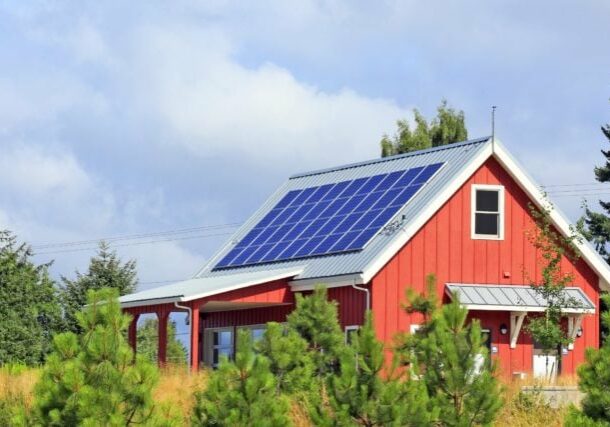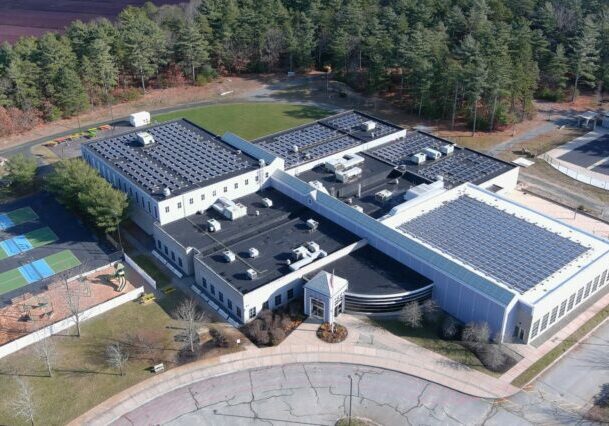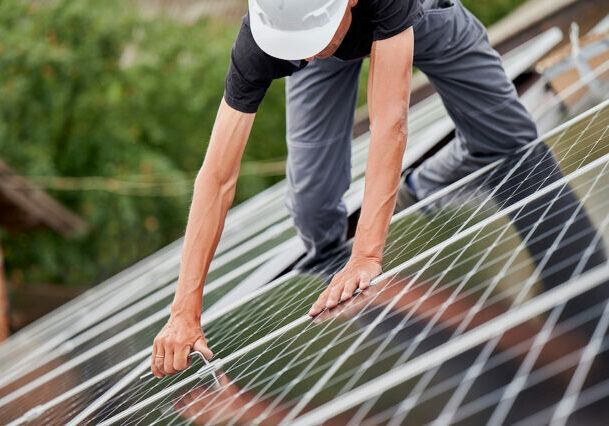May 31, 2022
Resilient Power for Emergency Operations: Freeing First Responders from the Burden of Unreliable Backup Power
By Marriele Mango, Abbe Ramanan
“We are very thankful for [solar+storage] being here. It got something out of our way – something that we should not be worrying about. When there’s an emergency, we should not be worrying about having power. It makes life so much easier for us. If there’s an emergency we can go out and respond to it and know that when we come back, we will still have power.” – Sergeant Luis Saez of Fire Station Guánica, Puerto Rico
When the power goes out, whether due to a grid-related failure or because of a natural disaster, emergency responders are on the front lines, providing food, shelter, fire rescue, and medical attention. The last thing they need to worry about is where their power is coming from, but for many, access to backup power during an outage is not a guarantee.
Solar PV paired with battery storage (solar+storage) can provide clean and reliable power in the event of an outage. In recent years, emergency responders have found both stationary solar+storage – systems installed in a particular facility – and mobile units – solar+storage systems that can be transported to different communities on a trailer – valuable in the event of a disaster and corresponding power outage.
Today, however, most critical facilities with backup power rely on diesel generators, which are often unreliable, expensive, and vulnerable to fuel shortages. Diesel emissions negatively impact the environment, air quality, and public health. In fact, spikes in carbon monoxide poisoning from fossil-fueled generators immediately follow a power outage. Alternatively, solar+storage can provide clean, automatic, reliable, and continuous power. Unlike diesel, solar+storage can also provide economic benefits – such as utility bill reduction – during regular grid operations.
The resilience provided by these systems for emergency responders is incalculable – solar+storage can provide emergency responders freedom to focus on providing critical services and not worry about where their backup power will come from.
In this blog, we discuss two case studies that apply solar+storage to emergency response initiatives – a stationary solar+storage system installed at a Puerto Rico fire station and a mobile solar+storage trailer used by emergency responders in Louisiana.
Stationary Solar+Storage for Fire Stations in Puerto Rico
After multiple hurricanes and a year-long blackout, Puerto Rico became a leader in rapid solar+storage development due to necessity – there were no other options. After years of neglect and underinvestment in the power grid, and with increasing severe weather events, residents still contend with weekly, multi-hour, grid-related power outages. These frequent outages are inconvenient but pale in comparison to dangers that come with longer blackouts due to hurricanes or severe earthquakes, which are also becoming more prevalent.
Following Hurricane Maria, Fire Station Culebra was without grid service for over a year. But getting diesel from the Puerto Rico mainland to the island was difficult, so the fire station was forced to continue operations as best they could without consistent electricity. Fire Station Culebra’s experience is a common one for emergency responders located in remote areas.
As a solution to grid outages, many local emergency service providers are turning to solar+storage for resilient power. Solar Responders is a nonprofit whose mission is to equip all 96 of Puerto Rico’s fire stations with solar+storage. The eight stations that have installed solar+storage so far have collectively provided over 2,000 hours of backup power to their communities.
Reliable, resilient, and renewable backup power from solar+storage means that during massive, island-wide blackouts, like the one in April 2022 following a fire at a major power plant, the fire stations can continue operations and serve as a charging station for residents to power critical electronic devices, such as cell phones or medical equipment. Sergeant Saez from Fire Station Guánica said: “We didn’t feel [the power outage] at all because of the system. We only knew [the grid] was out because people came to the station to charge their devices and use the refrigerator to store their medication and food.”
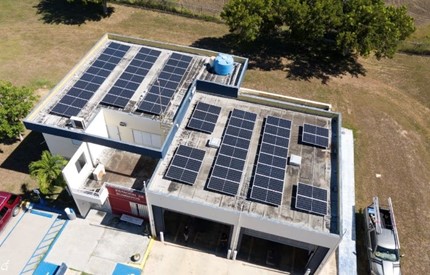
Fire Station Guánica’s rooftop solar. Photo credit: Solar Responders.
During the four-day blackout in April, Fire Station Guánica’s battery never dipped below 80 percent of its full charge thanks to the 20.8 kW of solar on the station’s roof, which recharged the batteries with solar power. Each of the fire stations are also equipped with a diesel generator as a redundancy measure, although the stations rarely need them. With the almost unlimited backup power supplied by the solar+storage system, the station is also able to freely provide charging services to the local community during an outage.
While many residents have their own fossil-fueled generators to help cope with frequent outages, these are expensive to run. Says Saez, “Usually during longer outages, we will get people coming in after the first day because of the cost of gas – they don’t want to have to get more gas for their generators.”
Mobile Solar+Storage for Disaster Relief in Louisiana
Louisianans are no strangers to extreme weather. Recent disasters in New Orleans and the surrounding areas, including Hurricane Ida in 2021 and a tornado in 2022, decimated an already outdated and fragile grid, leaving thousands without power or access to necessities for weeks (or longer). The most vulnerable suffered disproportionately during outages – those who are reliant on electricity-dependent medical equipment or refrigeration for medication faced medical emergencies are often in peril without access to reliable backup power. During outages, the elderly and people with access and functional needs (individuals who need assistance due to any condition that limits their ability to act) had to search for help outside their community when their local community centers and health clinics were forced to close because of the lack of reliable backup power.
The recent EF-3 tornado that landed in New Orleans in March 2022 impacted many communities, but the Arabi community, located in between Chalmette and the Lower Ninth Ward in New Orleans, was overwhelmed. Widespread outages were reported, and multiple families lost their homes entirely.
Within days, Together New Orleans, a coalition of congregations and community-based organizations in the greater New Orleans area, in partnership with Footprint Project, whose mission it is to help #BuildBackGreener after disasters by providing cleaner energy to communities in crisis, worked quickly to deploy a mobile solar+storage trailer to Arabi and the surrounding areas.
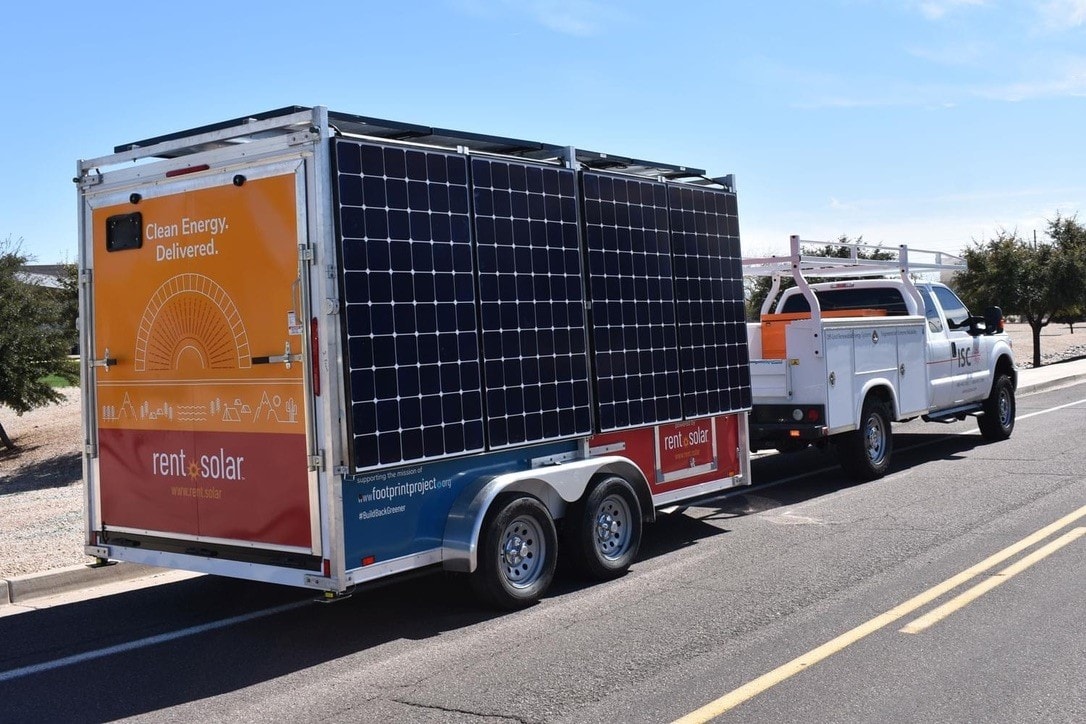
Mobile solar+storage unit. Photo Credit: Footprint Project
The solar+storage trailer provided a charging station for emergency responders as well as for residents, as it was equipped with PO-box style charging units (small individualized units with locks that house/charge portable chargers). Residents could take out a charger for the day and then return it when it needed to be recharged. Volunteer groups, including the Red Cross, used the trailer to power computers and printers. Together New Orleans was able to conduct their response initiative in real time on-the-ground – the mobile solar+storage trailer allowed Together to use phones, laptops and tablets to record the needs of the residents in-the-field and then coordinate support accordingly.
LaKenya Roberson, Together New Orleans Organizer, stated: “[The solar+storage trailer] kept people connected. It allowed people to communicate and feel some form of comfort and safety – they knew where the resources are and when they’d be available.”
Deploying Resilient Power in Your Community
It should be obvious that during both grid-related and disaster-related outages, first responders need resilient, reliable power to ensure they can provide life-saving medical attention, fire response, and critical services to their communities. Solar+storage — either in the form of stationary systems centrally located in places like fire stations or installed in mobile units that can be rapidly deployed to crisis centers — is safer, cleaner, and more reliable than fossil-fuel powered generators.
Unlike a diesel generator that sits idle for long periods, solar+storage can provide electricity, improve public health and generate economic benefits all the time. Furthermore, first responders and emergency management leaders have remarked how much quieter solar+storage is than diesel.
In a recent Clean Energy Group webinar, Mobile Solar+Storage for Emergency Management, Craig Moreau, Chief of Emergency Management and Homeland Security for Fayette County Texas, spoke to his mobile solar+storage experience: “I’m very impressed the charge [solar+storage] can hold, even if we need to deploy in the middle of the night I can run what we need to run for a pretty significant amount of time.” He continued that the fact that solar+storage produces no noise is a “big deal”.
Many communities are embracing the benefits of solar+storage with the assistance of nonprofit partners. Organizations like Footprint Project, Together New Orleans, and Solar Responders are equipping critical providers with solar+storage to support emergency response efforts. Programs like Clean Energy Group’s Technical Assistance Fund (TAF) can provide funds for feasibility assessments needed to see if a solar+storage project is technically and economically viable at a critical community facility. In fact, both Solar Responders and Footprint Project received TAF support to develop stationary and mobile solar+storage projects.
The National Oceanic and Atmospheric Administration (NOAA) recently announced its forecast for an above-average hurricane season for the Atlantic, and provided a quote from Secretary of Commerce Gina M. Raimondo, “Early preparation and understanding your risk is key to being hurricane resilient and climate-ready.” Solar+storage is a good first step.
If you lead a community-based organization interested in learning more about how solar+storage can provide resilient power benefits, visit Clean Energy Group’s Technical Assistance Fund webpage.











